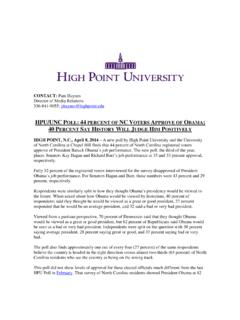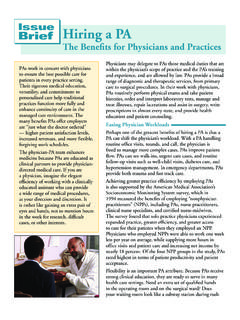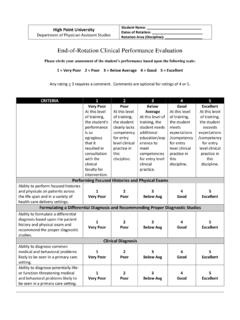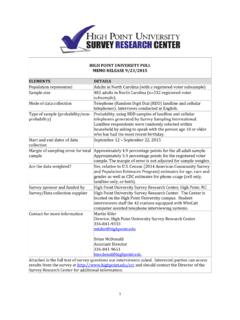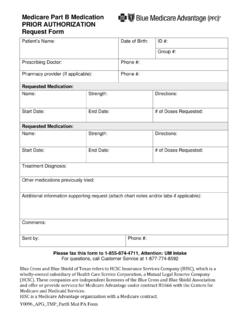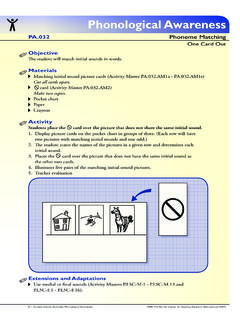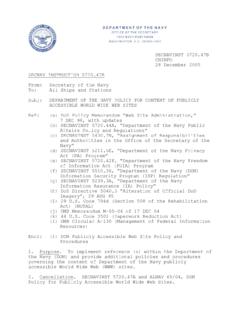Transcription of American Academy of Physician Assistants …
1 American Academy of Physician Assistants Page 1 PROFESSIONAL ISSUES: The Physician -PA Team JAN 2010 PROFESSIONAL ISSUES issue briefAmerican Academy of Physician AssistantsThe Physician assistant (PA) profession was founded on and remains committed to the concept of team practice. Working in all medical and surgical specialties, Physician -PA teams enhance coordination and quality of care. The Physician -PA team is effective because of the similarities in Physician and PA training, the PA profession s commitment to practice with supervision and the effi ciencies created by utilizing the strengths of each professional in the clinical practice Education Training in the Medical ModelThe relationship between PAs and physicians begins in PA school where physicians, PAs and science professors provide instruction in a curriculum following the medical school model.
2 PA students typically share classes, facilities and clinical rotations with medical students. PA education is modeled on Physician education. PA program applicants must complete at least two years of college courses in basic science and behavioral science as prerequisites to PA training. This is analogous to premedical studies required of medical students. The average length of PA education programs is about 27 months,1 and students begin PA programs with a year of basic medical science courses (anatomy, pathophysiology, pharmacology, physical diagnosis, etc.). Following the basic science and medical science classroom work, PA students enter the clinical phase of training. This includes classroom instruction and clinical rotations in medical and surgical specialties (family medicine, internal medicine, obstetrics and gynecology, pediatrics, general surgery, emergency medicine and psychiatry).
3 Due to the The Physician -PA TeamAmerican Academy of Physician Assistants Page 2 PROFESSIONAL ISSUES: The Physician -PA Team JAN 2010 The PA profession remains committed to the concept of the supervising Physician -PA of the rotation schedule, PA students complete 2,000 hours of supervised clinical practice prior to Because they train using similar curriculum, training sites, faculties and facilities, physicians and PAs develop a similarity in medical reasoning during their schooling that eventually leads to standardized thought in the clinical workplace; PAs think like to Team PracticeThe PA profession remains committed to the concept of the supervising Physician -PA team. This is refl ected in the American Academy of Physician Assistants (AAPA) description of the profession: Physician Assistants are health professionals licensed or, in the case of those employed by the federal government, credentialed to practice medicine with Physician supervision.
4 4 Since AAPA is the national professional society for PAs, its guidelines refl ect the philosophy of PAs in all specialties. Thus, the commitment to practicing as part of a Physician -directed team is clearly stated in the AAPA policy on team practice: AAPA believes that the Physician -PA team relationship is fundamental to the PA profession and enhances the delivery of high-quality health care. As the structure of the health care system changes, it is critical that this essential relationship be preserved and strengthened. 5 Several other medical organizations have policies supporting team practice. In 1995 the American Medical Association adopted guidelines for Physician /PA practice. The 10 guidelines describe the roles of the Physician and the PA, including the following: The role of the Physician assistant (s) in the delivery of care should be defi ned through mutually agreed upon guidelines that are developed by the Physician and the Physician assistant and based on the Physician s delegatory style.
5 6 The American Academy of Family Physicians (AAFP) also recognizes the value of team practice. AAFP policy states: The AAFP recognizes the dynamic nature of the health care environment and the importance of an interdependent team approach to health care that is supervised by a responsible licensed Physician . 7 Additionally, in 1998 the Pew Health Professions Commission completed a two-year study of the PA profession. In its 12 recommendations for PA deployment, the report supports the continuation of the traditional Physician -PA team, and suggests its use as a model in an evolving system: The traditional relationship between PAs and physicians, the hallmarks of which are frequent consultation, referral and review of PA practice by the supervising Physician , is one of the strengths of the PA profession.
6 The characteristics of this relationship are also considered to be the elements of professional relationships in any well-designed health system. 8 The Physician -PA Team Synergy in Clinical PracticeThe Physician -PA team supports effi cient patient-centered health care. Because of this, all states, the District of Columbia and the majority of US territories allow physicians to delegate to PAs medical American Academy of Physician Assistants Page 3 PROFESSIONAL ISSUES: The Physician -PA Team JAN health care that are within the Physician s scope of practice, the PA s training and experience and state law. Such duties include performing physical examinations, diagnosing and treating illnesses, ordering and interpreting lab tests, assisting in surgery and caring for patients in hospitals and nursing homes.
7 In all states, the District of Columbia, the Commonwealth of the Northern Mariana Islands and Guam, physicians may delegate prescriptive privileges to the PAs they have been incorporated into all practice areas, and numerous studies have found that the quality of care that PAs provide is comparable to that of According to a study published in The American Surgeon in 2004: PAs have demonstrated their abilities to perform in supervised intensive care settings, general inpatient unit, and are a valuable adjunct in improving quality of patient care. 13 Not only is the quality of care similar between physicians and PAs, but levels of patient satisfaction are also similar. A study conducted from 1997 to 2000 assessing patient satisfaction in a large, metropolitan managed care organization (MCO) found that: Patient satisfaction with practitioner interaction, care access and overall experience on visits attended by equivalent to, or slightly better than, that on visits attended by MDs in the primary care practices of this MCO.
8 14 Further, a nationwide study published in 2005 found that, regardless of provider, Medicare patients are generally satisfi ed with the quality of health care they Thus, when the Physician -PA team effectively uses the skills of each provider, it then ensures appropriate, integrated care and high levels of patient satisfaction. PAs also enhance health care coordination. They are responsible for the day-to-day care of patients, turning to their supervising physicians for cases requiring more advanced medical knowledge. In many primary care practices, the presence of PAs allows patients to be seen promptly, knowing that any routine problems will be handled effectively and that the expertise of the Physician is available if needed.
9 PAs are able to handle common patient complaints, follow-up visits and patient education and counseling. Physicians are then able to focus on complicated patient problems and allow appropriate time for their surgical practices, the presence of PAs enables surgeons to delegate the performance of preoperative histories and physical examinations, the ordering and compiling of necessary tests and part of the postoperative care. In addition, PAs are excellent Assistants at surgery. The familiarity and experience of the Physician -PA surgical team results in effi ciency in the OR that can reduce operative and anesthesia teams are also effective in medical and surgical subspecialty practices, where PAs perform examinations and procedures, order tests, provide follow-up care and help with the coordination of care for patients with complex AMA s Socioeconomic Monitoring System of approximately 4,000 practices found that 56 percent of group practice physicians and 39 percent of solo practice physicians employ nonphysician providers, including PAs.
10 According to the survey report, [t]he data show that employing nonphysician providers enhances Physician productivity. 16 Not only do studies attest to the value of the Physician -PA team, but so do physicians themselves. Writing in the journal Family Practice Management, a family Physician describes the PA s role in the practice: The PA makes himself invaluable by smoothing the ebbs and fl ows of our daily We wonder how any practice can thrive without one. 17 PAs remain committed to providing quality health care as part of a Physician -PA team. To learn more about the PA profession and how PAs contribute to comprehensive patient-centered care, visit Academy of Physician Assistants Page 4 PROFESSIONAL ISSUES: The Physician -PA Team JAN 20102318 Mill Road, Suite 1300 | Alexandria, VA 22314 1552P 703 836 2272 | F 703 684 Physician assistant Education Association.
